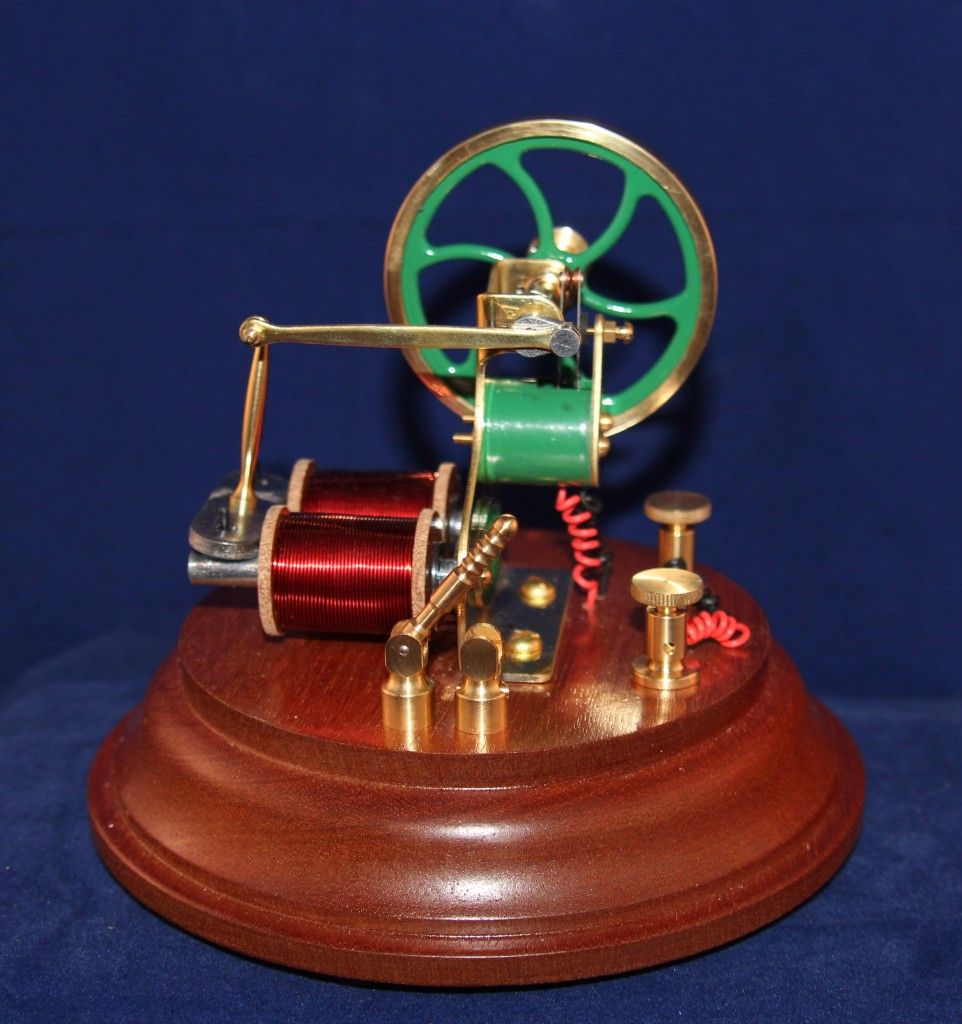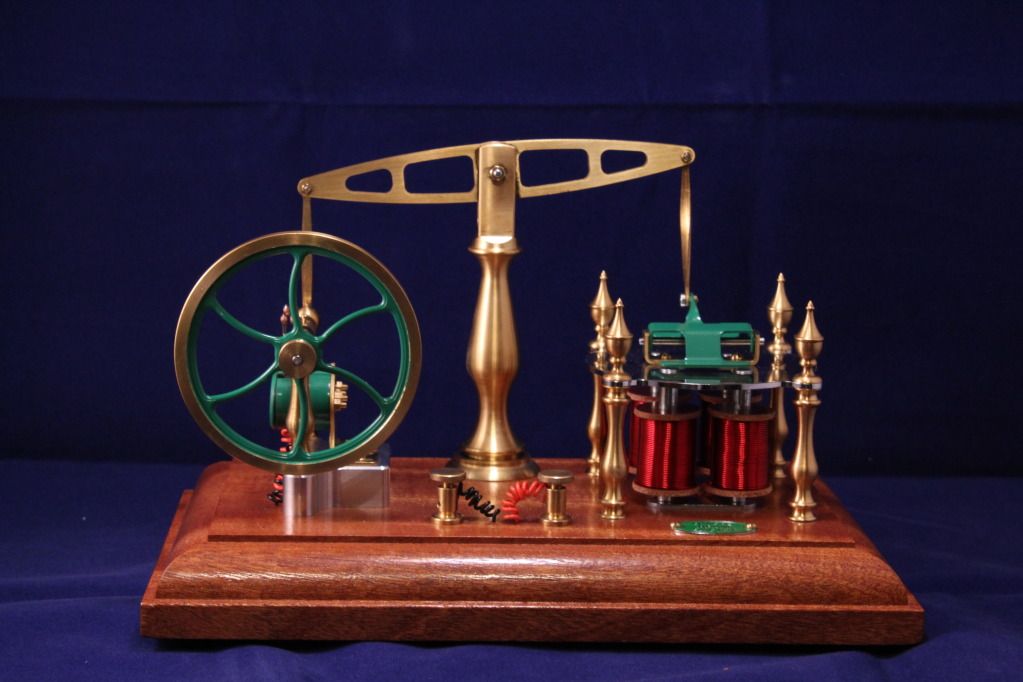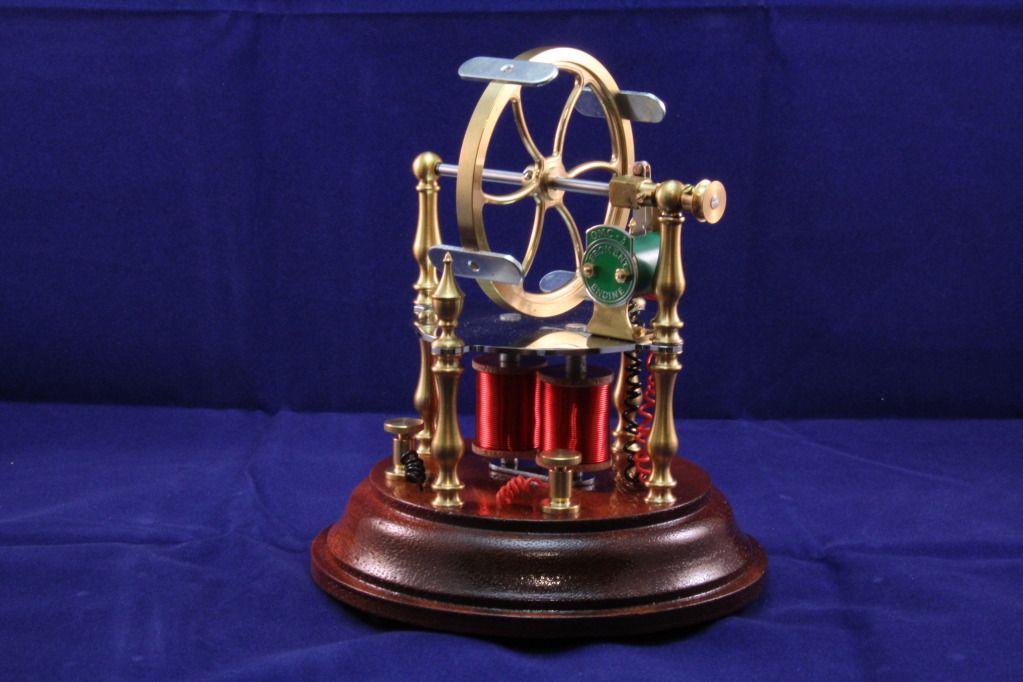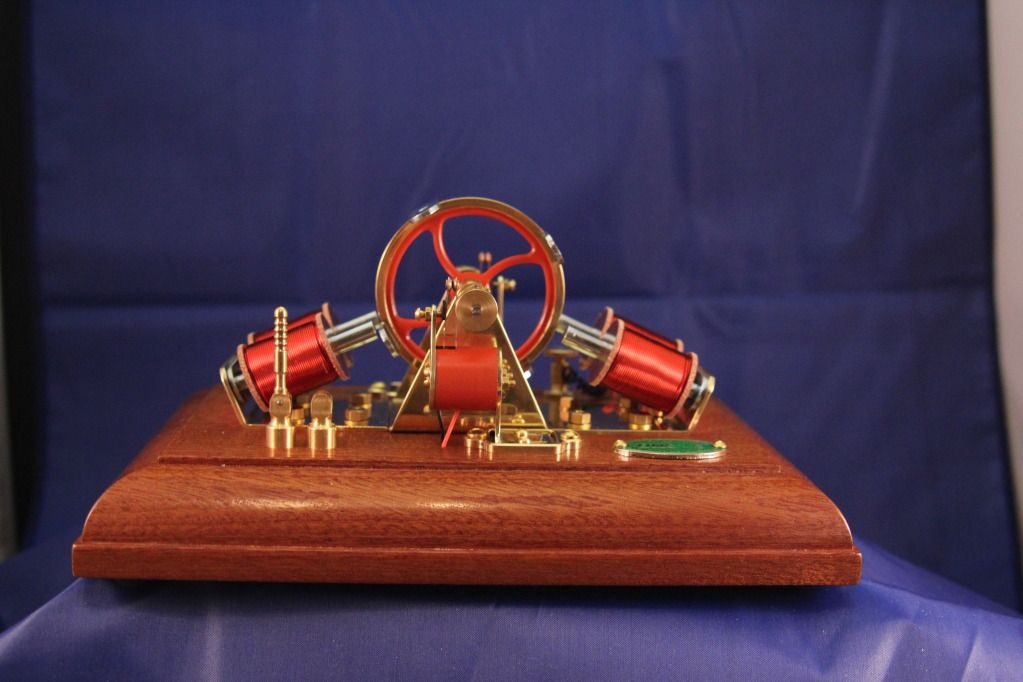Don1966
Senior Member
- Joined
- Jan 19, 2012
- Messages
- 487
- Reaction score
- 24
The main reason I got started into Model Engine Machining was these engines that I have collected. They come in Kit form and have up to 200 Pieces. They are amazing beautiful replicates of the orginal design with all effort to keeping with the times.
During the 30 years between 1830 and 1860 many attempts were made to use electro-magnetism to produce engines that could be used instead of steam and one group of experimeters converted the linear motions of their inventions to rotary motion via linkages similar to those found in steam engines of the time. the first electric motors consisted of machines with reciprocating motion and although this first group came to a dead end, fascinating and beautifully made examples survived in various museums around the world. These early reciprocating engines were quickly followed by revolving armature designs of which Paul Gustave Froments was the first in 1844. These were much more efficient and a variety of different and increasingly sophisticated designs emerged.
These Engines are those that survived.
I hope you enjoy my collection
Regards Don
The Rocking Engine is an example of the early development of the electromagnetic engine and attempts to capture the spirit of those exciting times.

The pioneers of the time tried to mimic steam engine technology in their efforts to use the newly discovered phenomenon of electricity.

Paul Gustave Froment who, in 1844 found that by placing the armatures onto the constantly revolving flywheel, much greater efficiency could be achieved over reciprocating designs where components had to be constantly accelerated.

Following Paul Gustave Froments discovery in 1844 of the revolving armature engine, a logical development of the original design was to introduce a second bank of coils on the opposite side of the flywheel and at an angle that achieved eight power pulses per rotation when the wheel was fitted with four armatures.

During the 30 years between 1830 and 1860 many attempts were made to use electro-magnetism to produce engines that could be used instead of steam and one group of experimeters converted the linear motions of their inventions to rotary motion via linkages similar to those found in steam engines of the time. the first electric motors consisted of machines with reciprocating motion and although this first group came to a dead end, fascinating and beautifully made examples survived in various museums around the world. These early reciprocating engines were quickly followed by revolving armature designs of which Paul Gustave Froments was the first in 1844. These were much more efficient and a variety of different and increasingly sophisticated designs emerged.
These Engines are those that survived.
I hope you enjoy my collection
Regards Don
The Rocking Engine is an example of the early development of the electromagnetic engine and attempts to capture the spirit of those exciting times.

The pioneers of the time tried to mimic steam engine technology in their efforts to use the newly discovered phenomenon of electricity.

Paul Gustave Froment who, in 1844 found that by placing the armatures onto the constantly revolving flywheel, much greater efficiency could be achieved over reciprocating designs where components had to be constantly accelerated.

Following Paul Gustave Froments discovery in 1844 of the revolving armature engine, a logical development of the original design was to introduce a second bank of coils on the opposite side of the flywheel and at an angle that achieved eight power pulses per rotation when the wheel was fitted with four armatures.
































































